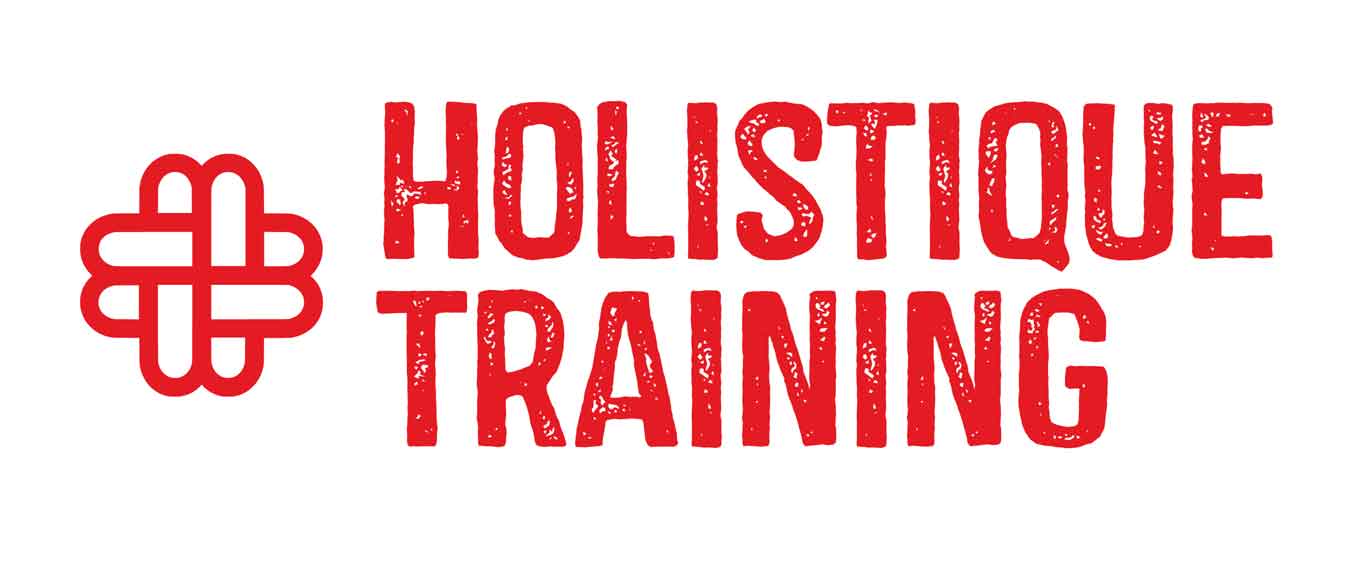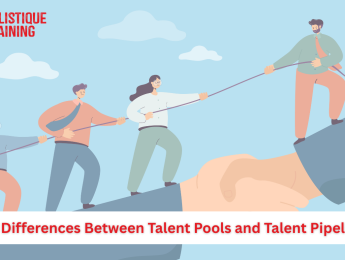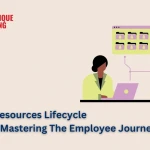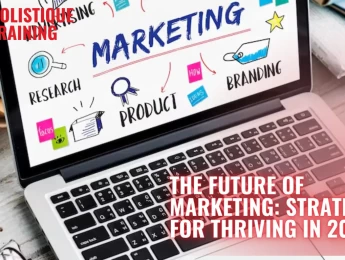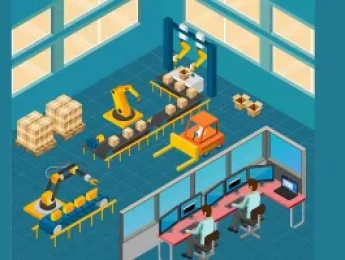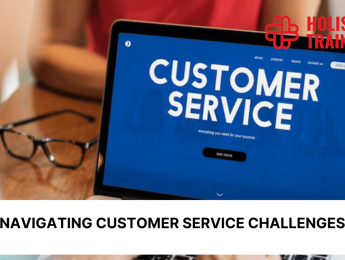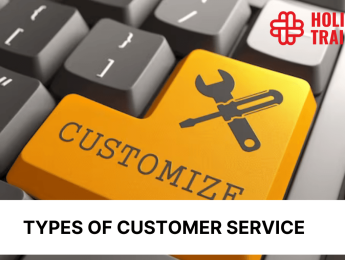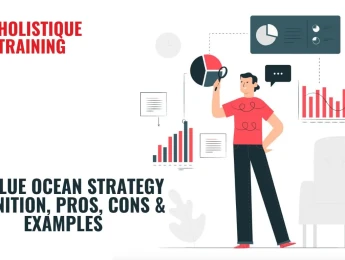- Table of Contents
- Introduction
- What is Talent Pipelining?
- Talent Pipelining vs. Traditional Recruitment
- How to Build a Talent Pipeline
- 1. Identify Key Roles and Skills
- 2. Define Ideal Candidate Profiles
- 3. Source Potential Candidates
- 4. Engage and Nurture Relationships
- 5. Leverage Technology
- 6. Continuously Evaluate and Update
- 7. Align Your Pipeline with Business Goals
- Benefits of Talent Pipelining
- 1. Reduced Time-to-Hire
- 2. Improved Quality of Hires
- 3. Enhanced Employer Brand
- 4. Cost Savings
- 5. Future-Proofing Your Workforce
- 6. Stronger Relationships with Passive Candidates
- 7. Greater Diversity and Inclusion
- 8. Reduced Stress for Hiring Teams
- 9. Competitive Advantage
- 10. Better Candidate Experience
- What is the Talent Pool?
- Key Features of a Talent Pool
- How Does a Talent Pool Work?
- Examples of Talent Pool Usage
- Scenario 1: Immediate Need for a Role
- Scenario 2: Preparing for Growth
- Scenario 3: Re-engaging Past Applicants
- Benefits of the Talent Pool
- 1. Faster Hiring Process
- 2. Cost Efficiency
- 3. Access to Passive Candidates
- 4. Improved Candidate Quality
- 5. Reduced Time-to-Fill Critical Roles
- 6. Enhanced Employer Branding
- 7. Long-Term Recruitment Strategy
- Key Differences Between Talent Pool and Talent Pipelining
- Take the Next Step: Transform Your HR Strategy
- Conclusion
Introduction
Recruitment is the backbone of any organization’s success, yet it’s often more complex than simply filling vacancies. Companies that excel in hiring understand the importance of being proactive rather than reactive. Two concepts that frequently come up in modern recruitment strategies are the talent pool and the talent pipeline. While they may sound similar, they serve distinct purposes and require unique approaches.
This blog post will explore the difference between a talent pool and a talent pipeline, diving into their definitions, benefits, and how they work. We’ll also discuss how organizations can build a talent pipeline, the advantages of maintaining a talent pool, and how these two concepts complement each other. By the end, you’ll have a clear understanding of how to leverage both to create a robust recruitment strategy.
What is Talent Pipelining?
Talent pipelining is a strategic approach to recruitment that focuses on building long-term relationships with potential candidates before a specific role becomes available. Instead of waiting for a vacancy to arise and scrambling to find the right person, talent pipelining ensures that you already have a pool of pre-qualified and interested candidates ready to step into the role.
Think of it as a proactive recruitment strategy. Organizations identify high-potential individuals and nurture relationships with them over time. This involves understanding their career aspirations, keeping them engaged with your company’s culture, and ensuring they remain interested in joining your team when the opportunity arises.
Talent pipelining extends beyond simply collecting resumes. It’s about creating meaningful connections with candidates, tracking their career progress, and aligning their skills and goals with your company’s future needs. This strategy is especially valuable for roles that are hard to fill or require niche expertise.
Talent Pipelining vs. Traditional Recruitment
Traditional recruitment is often reactive. A position opens up, and the hiring team begins the process of sourcing, screening, and interviewing candidates. While this approach can work for some roles, it’s often time-consuming and inefficient, especially for high-level or specialized positions.
Talent pipelining, on the other hand, shifts the focus from reacting to anticipating. Here’s a closer look at the key differences:
Traditional Recruitment | Talent Pipelining |
Starts when a vacancy arises | Ongoing, with no immediate vacancy required |
Focuses on short-term hiring needs | Focuses on long-term talent development |
Often leads to rushed decision-making | Allows for thoughtful, informed hiring decisions |
Relies heavily on job postings and advertising | Relies on relationship-building and networking |
Limited to candidates actively seeking jobs | Includes passive candidates who aren’t actively job-hunting |
By adopting a talent pipeline strategy, organizations can reduce time-to-hire, improve candidate quality, and enhance the overall hiring experience for both the company and the candidate.
How to Build a Talent Pipeline
Building a talent pipeline is not just about collecting resumes or maintaining a list of potential candidates—it’s a strategic process that involves identifying, attracting, engaging, and nurturing top talent over time. A well-developed talent pipeline ensures that when a role opens up, you already have a pool of qualified, interested, and pre-vetted candidates ready to step in. Here’s a step-by-step guide to creating one:
1. Identify Key Roles and Skills
The first step in building a talent pipeline is understanding your organization’s current and future hiring needs. Ask yourself:
- Which roles are critical to the success of your organization?
- Are there positions that are consistently hard to fill or require highly specialized skills?
- What skills or competencies will your organization need in the next 6-12 months or even further down the line?
For example, if your company is planning to expand into a new market, you might need bilingual sales representatives or regional marketing experts. By identifying these key roles and skills early, you can focus your efforts on sourcing candidates who align with your long-term business goals.
2. Define Ideal Candidate Profiles
Once you’ve identified the roles you want to target, the next step is to create detailed profiles for your ideal candidates. This involves more than just listing technical qualifications—it’s about understanding the full picture of what makes someone successful in the role.
Consider:
- Technical Skills: What specific expertise or certifications are required?
- Soft Skills: Does the role require leadership, collaboration, or problem-solving abilities?
- Cultural Fit: What type of personality or work style thrives in your company’s environment?
- Career Aspirations: What motivates candidates in this role, and how can your company align with their goals?
These profiles serve as a blueprint for sourcing and evaluating candidates, ensuring you’re targeting individuals who are not only qualified but also aligned with your company’s mission and values.
3. Source Potential Candidates
Sourcing candidates for your talent pipeline requires a multi-channel approach. Here are some effective strategies:
- LinkedIn and Professional Networks: Use platforms like LinkedIn to identify and connect with professionals who match your ideal candidate profiles. Join industry groups or attend virtual events to expand your reach.
- Employee Referrals: Your current employees are often the best source of quality candidates. Encourage them to refer colleagues or contacts who might be a good fit for future roles.
- Industry Events and Conferences: Attend events where top talent in your industry gathers. This is a great way to meet potential candidates face-to-face and start building relationships.
- University Partnerships: Collaborate with universities and colleges to identify promising graduates or interns who could grow into future leaders.
- Talent Communities: Create online communities or forums where professionals can engage with your brand, learn about your industry, and stay connected with your company.
Remember, your pipeline should include both active job seekers and passive candidates—those who aren’t actively looking for a new role but might be open to the right opportunity.
4. Engage and Nurture Relationships
The heart of talent pipelining lies in relationship-building. Once you’ve identified potential candidates, the next step is to keep them engaged and interested in your company. This requires consistent and meaningful communication.
Here’s how you can nurture relationships effectively:
- Personalized Outreach: Send tailored messages that show genuine interest in the candidate’s career goals. Avoid generic emails or impersonal communication.
- Share Valuable Content: Keep candidates engaged by sharing industry insights, company news, or professional development resources. For example, you could send them articles about trends in their field or invite them to webinars hosted by your organization.
- Showcase Your Employer Brand: Highlight what makes your company a great place to work. Share stories about your workplace culture, employee success stories, or community involvement initiatives.
- Stay in Touch Regularly: Don’t let months go by without contact. Even a quick check-in email or a LinkedIn message can help keep the relationship warm.
- Invite Candidates to Events: Host networking events, open houses, or virtual meetups where candidates can interact with your team and get a feel for your company culture.
The goal is to build trust and keep your company top-of-mind, so when the right opportunity arises, candidates are excited to join your team.
5. Leverage Technology
Managing a talent pipeline manually can be overwhelming, especially as it grows. That’s where technology comes in. Tools like applicant tracking systems (ATS) and customer relationship management (CRM) platforms can help you organize, track, and nurture your pipeline effectively.
- Applicant Tracking Systems (ATS): Use an ATS to store candidate information, track interactions, and manage the hiring process. Recent research reveals that almost 99% of Fortune 500 companies consistently rely on ATS platforms. Many ATS platforms also offer features like resume parsing and automated reminders to follow up with candidates.
- CRM Tools for Recruitment: Recruitment-specific CRMs allow you to segment your pipeline, schedule personalized communications, and monitor engagement levels.
- AI and Automation: Some recruitment tools use AI to analyze candidate data, predict job fit, and even automate initial outreach. This can save time and ensure you’re focusing on the most promising candidates.
By leveraging technology, you can streamline the process of building and maintaining your talent pipeline, ensuring no candidate slips through the cracks.
6. Continuously Evaluate and Update
A talent pipeline is not a one-and-done project—it’s a dynamic process that requires regular evaluation and updates. Here’s how to keep your pipeline fresh and relevant:
- Review Candidate Profiles: Periodically review your pipeline to ensure candidates are still a good fit. For example, someone who was an entry-level candidate two years ago might now be ready for a mid-level role.
- Incorporate Feedback: Analyze the success of past hires from your pipeline. What worked well? What could be improved? Use this feedback to refine your strategy.
- Stay Current with Market Trends: The job market is constantly evolving. Keep an eye on trends in your industry to ensure your pipeline aligns with the latest demands and expectations.
- Remove Inactive Candidates: If a candidate has clearly moved on or is no longer interested, update your records to keep your pipeline focused and accurate.
Regular maintenance ensures your pipeline remains a valuable resource rather than an outdated list of names.
7. Align Your Pipeline with Business Goals
Finally, ensure that your talent pipeline strategy aligns with your organization’s broader business goals. For example:
- If your company is planning to expand internationally, focus on sourcing candidates with global experience or language skills.
- If innovation is a priority, target candidates with a track record of creativity and problem-solving.
By aligning your pipeline with your company’s vision, you can ensure that your recruitment efforts directly contribute to long-term success.
Building a talent pipeline is an investment, but the rewards are well worth the effort. Not only does it save time and money in the long run, but it also ensures you’re hiring the best possible candidates for your organization. With a strong talent pipeline in place, you’ll be prepared to meet your hiring needs—no matter what the future holds.
Benefits of Talent Pipelining
Investing in a talent pipeline offers numerous advantages, including:
1. Reduced Time-to-Hire
One of the most significant benefits of talent pipelining is the dramatic reduction in time-to-hire. Traditional recruitment often begins only when a vacancy arises, which means the hiring process can take weeks or even months as recruiters scramble to source, screen, and interview candidates.
With a talent pipeline in place, this time-consuming step is eliminated. You’ve already identified and engaged with qualified candidates, meaning you can quickly move them through the final stages of the hiring process. This is particularly beneficial for roles that are critical to business operations or those that require immediate attention, such as leadership positions or specialized technical roles.
For example, if a key manager unexpectedly leaves, having a pre-vetted list of candidates in your pipeline ensures minimal disruption to your business.
2. Improved Quality of Hires
Talent pipelining allows you to focus on quality over quantity. Instead of rushing to fill a position with the first available candidate, you have the luxury of taking your time to identify and nurture top talent.
By building long-term relationships with candidates, you gain deeper insights into their skills, experience, and aspirations. This enables you to make more informed hiring decisions, ensuring a better fit for both the role and your company culture.
Additionally, because talent pipelining often targets passive candidates—those who aren’t actively job-seeking but are open to the right opportunity—you’re more likely to attract high-caliber individuals who might not have applied through traditional channels.
3. Enhanced Employer Brand
A well-executed talent pipeline strategy can significantly enhance your employer brand. When you consistently engage with potential candidates, you’re not just building a pipeline—you’re creating a positive impression of your company as an employer of choice.
Regular communication, personalized outreach, and meaningful interactions show candidates that your company values relationships and invests in talent. Even if a candidate isn’t ready to make a move immediately, they’ll remember the positive experience and be more likely to consider your organization in the future.
For example, sharing company updates, success stories, or insights into your workplace culture helps candidates feel connected to your brand, even before they officially join your team.
4. Cost Savings
Recruitment can be expensive, especially when it involves job postings, recruitment agencies, and lengthy hiring processes. Talent pipelining helps reduce these costs in several ways:
- Lower Advertising Costs: With a pipeline of pre-qualified candidates, you don’t need to rely as heavily on job boards or paid advertisements.
- Reduced Agency Fees: By building your own network of candidates, you can minimize the need for third-party recruiters.
- Fewer Bad Hires: Hiring the wrong person can be costly in terms of time, money, and team morale. Talent pipelining reduces this risk by ensuring you’ve thoroughly vetted candidates before making an offer.
Over time, these savings can add up, making talent pipelining a cost-effective recruitment strategy.
5. Future-Proofing Your Workforce
The business landscape is constantly evolving, and so are your organization’s hiring needs. Talent pipelining helps you stay ahead of the curve by preparing for future challenges and opportunities.
For example:
- If your company is planning a major expansion, you can proactively build a pipeline of candidates with the skills and experience needed to support that growth.
- If you’re in an industry with high turnover rates, having a talent pipeline ensures you’re always prepared to fill vacancies quickly.
- In times of economic uncertainty, a strong pipeline allows you to respond to sudden changes in hiring demand without starting from scratch.
By anticipating future needs and maintaining a steady flow of qualified candidates, you can ensure your workforce remains agile and resilient.
6. Stronger Relationships with Passive Candidates
One of the unique advantages of talent pipelining is its ability to tap into the passive candidate market. Passive candidates—those who are currently employed but open to new opportunities—are often some of the most skilled and experienced professionals in their fields.
Because these individuals aren’t actively job-seeking, they’re less likely to apply through traditional channels. However, by building relationships with them over time, you can position your company as their next career move when the timing is right.
For example, you might connect with a talented software engineer at an industry event and stay in touch through occasional check-ins or by sharing relevant content. When they’re ready for a new challenge, your company will likely be at the top of their list.
7. Greater Diversity and Inclusion
Talent pipelining also supports diversity and inclusion efforts by giving you more time and opportunities to identify and engage with underrepresented talent. Instead of relying on a limited pool of applicants during a short hiring window, you can proactively seek out diverse candidates and build relationships with them over time.
This approach allows you to create a more inclusive hiring process and ensure that your organization benefits from a wide range of perspectives, experiences, and ideas. A diverse workforce not only drives innovation but also enhances your company’s reputation and ability to attract top talent.
8. Reduced Stress for Hiring Teams
Recruitment can be a stressful process, especially when hiring managers are under pressure to fill a role quickly. Talent pipelining alleviates this stress by ensuring that qualified candidates are always within reach.
For example, instead of scrambling to source candidates for a critical position, hiring managers can simply turn to the pipeline for pre-vetted individuals who are already familiar with the company. This streamlined process allows hiring teams to focus on making thoughtful, strategic decisions rather than rushing to meet deadlines.
9. Competitive Advantage
In today’s fast-paced job market, top talent doesn’t stay available for long. Companies that rely solely on traditional recruitment methods often lose out to competitors who move faster.
Talent pipelining gives you a competitive edge by ensuring you’re always one step ahead. When a role opens up, you’re not starting from scratch—you already have a pool of engaged, high-quality candidates who are ready to be considered. This agility can make all the difference in securing top talent before your competitors do.
10. Better Candidate Experience
Finally, talent pipelining enhances the candidate experience by creating a smoother, more personalized hiring journey. Candidates in your pipeline already feel connected to your company, which makes the recruitment process more engaging and less transactional.
For example:
- Candidates appreciate being approached for opportunities that align with their skills and interests, rather than receiving generic job offers.
- Because you’ve already built a relationship, the interview process feels more collaborative and less like a cold introduction.
- Even if a candidate isn’t selected for a role, they’re more likely to walk away with a positive impression of your company, increasing the likelihood of future engagement.
A positive candidate experience not only helps you attract top talent but also strengthens your employer brand in the long run.
The benefits of talent pipelining go far beyond simply filling roles faster. From improving the quality of hires and enhancing your employer brand to reducing costs and future-proofing your workforce, talent pipelining is a powerful strategy that can transform your recruitment efforts. By investing time and resources into building and maintaining a strong talent pipeline, your organization can stay ahead of the competition, attract top talent, and create a more agile and resilient workforce.
What is the Talent Pool?
A talent pool is a database of potential candidates who could be considered for current or future roles within an organization. Unlike a talent pipeline, which focuses on active engagement and relationship-building, a talent pool is more of a repository or collection of candidate information.
Key Features of a Talent Pool
- Diverse Candidate Profiles: Talent pools often include a mix of active job seekers, passive candidates, and previous applicants.
- Centralized Database: Candidate information is stored in a centralized system, making it easy to search and retrieve profiles when needed.
- Dynamic Nature: A talent pool evolves over time as candidates are added, updated, or removed based on their availability and relevance.
- Technology-Driven: Most talent pools are managed using ATS or CRM systems that allow recruiters to organize and filter candidates effectively.
How Does a Talent Pool Work?
The talent pool functions as a preemptive solution to recruitment challenges, enabling companies to act quickly when hiring needs arise. Here’s how it works in practice:
Building the Talent Pool:
The first step is to collect candidate information from various sources. This might include resumes from job applicants, LinkedIn profiles, referrals from employees, or contacts made at networking events. Some companies also use sourcing tools or AI-driven platforms to identify and add passive candidates to their talent pool.
Organizing and Categorizing Candidates:
Once candidates are added to the talent pool, recruiters organize them into categories based on relevant criteria. For example, you might create separate segments for marketing professionals, software developers, or customer service representatives. This organization ensures that you can quickly find the right candidates for specific roles.
Maintaining and Updating the Pool:
A talent pool is only valuable if it’s kept up-to-date. This involves regularly reviewing candidate profiles, adding new information (such as updated resumes or LinkedIn activity), and removing candidates who are no longer relevant (e.g., those who have taken other jobs or are no longer interested in your company).
Utilizing the Talent Pool:
When a role opens up, recruiters can search the talent pool for candidates who match the job requirements. Because these candidates are already familiar with your company—or have been pre-screened in some way—the hiring process becomes faster and more efficient.
Engaging with the Talent Pool:
While a talent pool is primarily a storage resource, it can also be used for engagement. For example, you might send periodic updates about your company, share job opportunities, or invite candidates to events. This ensures that your talent pool remains warm and ready when you need it.
Examples of Talent Pool Usage
To better understand how a talent pool works, consider these real-world scenarios:
Scenario 1: Immediate Need for a Role
A company suddenly needs to hire a graphic designer due to an unexpected resignation. Instead of starting the recruitment process from scratch, the hiring manager searches the talent pool for candidates with graphic design skills. Within hours, they identify three strong candidates who are already familiar with the company, significantly reducing time-to-hire.
Scenario 2: Preparing for Growth
A tech startup anticipates rapid growth in the next six months and knows it will need several software engineers. By proactively building a talent pool of developers, the company ensures it’s ready to fill these roles as soon as they open, giving it a competitive edge in a tight labor market.
Scenario 3: Re-engaging Past Applicants
A candidate who applied for a marketing role six months ago was not selected but left a positive impression. When a new marketing position opens up, the recruiter revisits the candidate’s profile in the talent pool and finds they’re now a perfect fit for the new role.
Benefits of the Talent Pool
Maintaining a talent pool offers several advantages:
1. Faster Hiring Process
One of the most significant benefits of a talent pool is the ability to fill vacancies quickly. Traditional recruitment often involves starting the hiring process from scratch, which can take weeks or even months. With a talent pool, you already have a list of pre-qualified candidates who match the skills and experience needed for the role.
For example:
- When a position opens up, recruiters can search their talent pool for candidates who meet the job requirements instead of spending time sourcing new applicants.
- This eliminates the need for extensive advertising, screening, and sourcing, allowing you to move directly to the interview stage.
This faster hiring process is particularly valuable for time-sensitive roles or when unexpected vacancies arise.
2. Cost Efficiency
Recruitment can be expensive, especially when relying on external job boards, recruitment agencies, or headhunters. A talent pool reduces these costs by giving you a ready-made resource of potential candidates, eliminating the need to frequently advertise roles or pay external recruiters.
Here’s how a talent pool saves costs:
- Lower Advertising Expenses: Since you’re not starting from scratch every time, you reduce the need for repeated job postings on expensive platforms.
- Reduced Agency Fees: By building your own database of candidates, you minimize reliance on third-party recruiters or headhunters.
- Efficient Use of Internal Resources: Your HR team spends less time sourcing and screening candidates, allowing them to focus on other strategic initiatives.
Over time, the savings from maintaining a talent pool can add up significantly, making it a cost-effective recruitment strategy.
3. Access to Passive Candidates
Passive candidates—those who are not actively looking for a job but are open to opportunities—often represent some of the best talent in the market. They are typically employed, experienced, and not flooding job boards with their resumes. A talent pool allows you to include these individuals in your database, giving you access to a broader and more qualified group of candidates.
By engaging with passive candidates and keeping their profiles in your talent pool, you create opportunities to approach them when the right role becomes available. This proactive approach ensures you’re not limited to just active job seekers, giving you a competitive edge in attracting top talent.
4. Improved Candidate Quality
A talent pool allows you to focus on quality over quantity. Instead of sifting through hundreds of applications from unqualified candidates, you can rely on your talent pool to provide pre-screened individuals who align with your company’s requirements and culture.
Here’s why candidate quality improves with a talent pool:
- Pre-Screened Candidates: Many candidates in your talent pool have already been evaluated during previous hiring processes, so you know their qualifications and potential.
- Long-Term Relationships: By staying in touch with candidates over time, you gain a deeper understanding of their skills, career goals, and cultural fit.
- Targeted Searches: Talent pools are often segmented by skills, experience, or location, allowing you to quickly identify candidates who are the best fit for a specific role.
This focus on quality ensures that your hiring decisions are informed and strategic, leading to better long-term outcomes for your organization.
5. Reduced Time-to-Fill Critical Roles
Certain roles—such as senior leadership positions, technical specialists, or roles in high-demand industries—can be challenging to fill. A talent pool gives you a head start on these critical hires by ensuring you always have a list of potential candidates who are qualified and interested.
For example:
- If your company suddenly needs a new cybersecurity expert, you can turn to your talent pool and immediately identify candidates with the right skills and certifications.
- This reduces the time it takes to fill high-priority roles, minimizing disruptions to your business operations.
By maintaining a talent pool, you’re better prepared to respond to urgent hiring needs without compromising on candidate quality.
6. Enhanced Employer Branding
A talent pool isn’t just a database—it’s also an opportunity to strengthen your employer brand. By engaging with candidates in your talent pool, you demonstrate that your company values relationships and invests in talent for the long term.
Here’s how a talent pool enhances your employer brand:
- Regular Communication: Sharing updates, industry insights, or personalized messages with candidates in your talent pool keeps them engaged and interested in your company.
- Positive Candidate Experience: Even if a candidate isn’t selected for a role initially, including them in your talent pool shows that you recognize their potential and may consider them for future opportunities.
- Showcasing Company Culture: By sharing stories, videos, or testimonials about your workplace culture, you can make candidates feel more connected to your brand.
A strong employer brand not only attracts top talent but also ensures that candidates in your talent pool remain engaged and excited about potential opportunities with your company.
7. Long-Term Recruitment Strategy
A talent pool is a long-term investment that helps future-proof your hiring strategy. Instead of focusing solely on immediate vacancies, you’re building a resource that can support your recruitment needs for years to come.
Benefits of this long-term approach include:
- Proactive Recruitment: You’re not reacting to vacancies as they arise—you’re preparing for them in advance.
- Workforce Planning: By analyzing trends in your talent pool, you can identify skills gaps and plan for future hiring needs.
- Succession Planning: A talent pool can include internal employees who are being groomed for leadership roles or career advancement, ensuring a smooth transition when key positions open up.
This strategic approach ensures your organization is always prepared to attract and retain top talent, even in a competitive labor market.
Key Differences Between Talent Pool and Talent Pipelining
While both talent pools and talent pipelines aim to improve recruitment efficiency, they differ in their approach and purpose. Here’s a side-by-side comparison:
Talent Pool | Talent Pipeline |
A database of potential candidates | A strategic process of building relationships |
Focuses on storing candidate information | Focuses on engaging and nurturing candidates |
Reactive: Used when a vacancy arises | Proactive: Anticipates future hiring needs |
Includes both active and passive candidates | Primarily targets high-potential passive candidates |
Minimal ongoing interaction with candidates | Regular communication and engagement |
In short, a talent pool is a static resource, while a talent pipeline is an active, dynamic process. Both play important roles in a comprehensive recruitment strategy, but they serve different purposes.
Take the Next Step: Transform Your HR Strategy
To truly excel in modern recruitment and workforce planning, HR professionals must embrace technological advancements and data-driven approaches. Our course, "Technological Transformation in Human Resources," is designed to equip you with the knowledge and tools to revolutionize your HR strategies.
In this course, you’ll learn:
- How to leverage technology to build and manage talent pools and pipelines effectively.
- The role of AI and automation in streamlining recruitment processes.
- Strategies for enhancing employer branding and candidate engagement using digital tools.
- Workforce analytics for better decision-making and future-proofing your hiring strategies.
Whether you're looking to optimize your recruitment efforts, improve candidate quality, or prepare your organization for the future of work, this course provides actionable insights and practical solutions.
Don’t just adapt to change—lead it. Enroll in "Technological Transformation in Human Resources" today and take your HR capabilities to the next level.
Conclusion
Understanding the distinction between a talent pool and a talent pipeline is essential for modern recruitment strategies. A talent pool serves as a centralized database of potential candidates, providing quick access to a wide range of profiles for immediate hiring needs. On the other hand, a talent pipeline emphasizes building long-term relationships with high-potential individuals, ensuring your organization is ready to meet future workforce demands.
When used together, these approaches create a robust recruitment strategy that balances speed with quality. By investing in talent pipelining, organizations can proactively address skills gaps, reduce time-to-hire, and secure top-tier talent for critical roles. Simultaneously, maintaining a well-organized talent pool ensures you're always prepared to act quickly when urgent vacancies arise.
The real power lies in integrating these strategies to build a sustainable, future-ready workforce. By leveraging the strengths of both a talent pool and a talent pipeline, companies can stay competitive in the ever-evolving talent market, attract the best candidates, and drive long-term organizational success.
